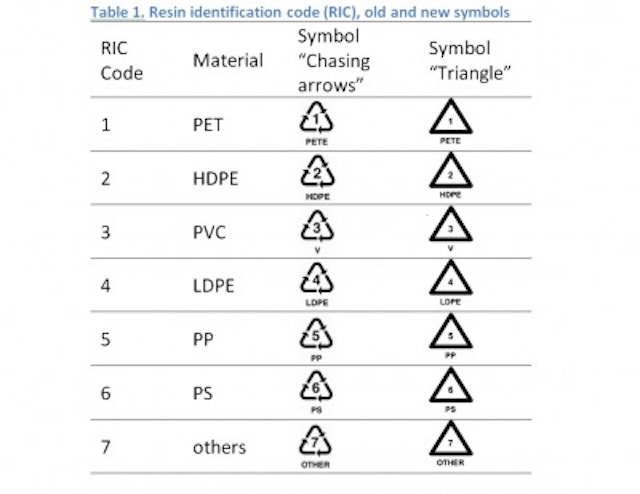Have you ever noticed the small triangle symbol on the bottom of plastic bottles? It’s more than just a recycling symbol. The number inside reveals crucial information about the plastic’s safety for reuse. Understanding this can help you make informed choices for your health and the environment. Let’s explore what this symbol really means.
What is the Triangle Symbol on the Bottom of a Plastic Bottle?
The triangle symbol on the bottom of a plastic bottle, often seen with a number inside, is part of a system called the Resin Identification Code (RIC). This symbol, which resembles a recycling symbol, indicates the type of plastic used to make the bottle. The numbers, ranging from 1 to 7, identify the specific resin from which the plastic is made.
Who Invented This System?
The Resin Identification Code was introduced by the Society of the Plastics Industry (SPI) in 1988. The system was developed to help recycling facilities sort plastics more effectively. While the symbol may look like a recycling symbol, it was primarily created for the benefit of recyclers, not consumers.

Common Misconceptions
Many people mistakenly believe that the triangle symbol on plastic bottles indicates that the bottle is recyclable. However, this is not necessarily true. The symbol is often confused with the general recycling logo, leading people to think that any plastic bottle with this symbol can be recycled. In reality, the symbol only identifies the type of plastic resin used, and not all types of plastic are recyclable in all regions.
The Real Purpose
The main purpose of the triangle symbol is to inform recyclers about the type of plastic. For consumers, the number inside the triangle is more relevant for understanding whether the plastic is safe for reuse. For example, the number “1” indicates PET (Polyethylene Terephthalate), which is commonly used for water and soda bottles and is generally safe for one-time use but not recommended for reuse. On the other hand, numbers like “3” and “7” indicate plastics that may contain harmful chemicals, making them less suitable for reuse, especially with food or drink.

Creative Uses of the Code
While the Resin Identification Code was designed for industrial purposes, understanding these symbols can help consumers make better choices about their plastic use. For instance, knowing which plastics are safe for reuse can reduce exposure to harmful chemicals. Additionally, understanding which plastics are more recyclable can help in making environmentally conscious decisions, even though the symbol itself was not designed with recycling in mind for consumers.

In summary, the triangle symbol on the bottom of plastic bottles is a crucial tool for identifying the type of plastic, aiding both recycling efforts and consumer safety. However, it’s essential to understand its true purpose to avoid common misconceptions.



